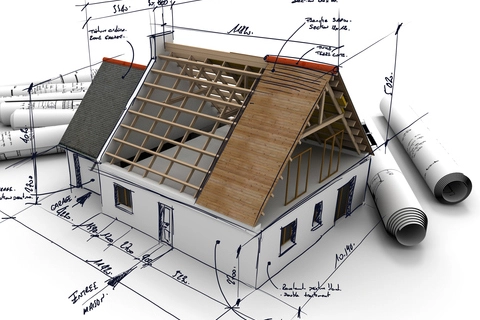Service Life Planning

Building and Design standards cover everything from the foundation, to the structural skeleton, all the way through to indoor environment considerations and service-life calculations. With an eye toward efficiency in energy expenditure for climate control, building and design standards help reduce expenses while raising quality.
ISO 15686-1:2011
Buildings and constructed assets - Service life planning - Part 1: General principles and framework
ISO 15686-1:2011 identifies and establishes general principles for service life planning and a systematic framework for undertaking service life planning of a planned building or construction work throughout its life cycle (or remaining life cycle for existing buildings or construction works). The life cycle incorporates initiation, project definition, design, construction, commissioning, operation, maintenance, refurbishment, replacement, deconstruction and ultimate disposal, recycling or re-use of the asset (or parts thereof), including its components, systems and building services. ISO 15686-1:2011 is applicable to the service life planning of individual buildings.
ISO 15686-2:2012
Buildings and constructed assets - Service life planning - Part 2: Service life prediction procedures
ISO 15686-2:2012 describes procedures that facilitate service life predictions of building components, based on technical and functional performance. It provides a general framework, principles and requirements for conducting and reporting such studies. It does not cover limitation of service life due to obsolescence or other non-measurable or unpredictable performance states.
ISO 15686-3:2002
Buildings and constructed assets - Service life planning - Part 3: Performance audits and reviews
ISO 15686-3:2002 is concerned with ensuring the effective implementation of service life planning. It describes the approach and procedures to be applied to pre-briefing, briefing, design, construction and, where required, the life care management and disposal of buildings and constructed assets to provide a reasonable assurance that measures necessary to achieve a satisfactory performance over time will be implemented. The cost implications of service life planning and the broader issues of sustainability (e.g. embodied energy, land use) are not developed in ISO 15686-3:2002.

ISO 15686-5:2017
Buildings and constructed assets - Service life planning - Part 5: Life-cycle costing
ISO 15686-5:2017 provides requirements and guidelines for performing life-cycle cost (LCC) analyses of buildings and constructed assets and their parts, whether new or existing. NOTE 1 Life-cycle costing takes into account cost or cash flows, i.e. relevant costs (and income and externalities if included in the agreed scope) arising from acquisition through operation to disposal. NOTE 2 Life-cycle costing typically includes a comparison between alternatives or an estimate of future costs at portfolio, project or component level. Life-cycle costing is performed over an agreed period of analysis, clearly identifying whether the analysis is for only part of or for the entire life cycle of the constructed asset.
ISO 15686-7:2017
Buildings and constructed assets - Service life planning - Part 7: Performance evaluation for feedback of service life data from practice
ISO 15686-7:2017 provides a generic basis for performance evaluation for feedback of service life data from existing buildings and constructed assets, including a definition of the terms to be used and the description of how the (technical) performance can be described and documented to ensure consistencies. The purpose of this document is to describe the principles for service life performance surveys and evaluation with an emphasis on technical recommendations. It describes a generic methodology, including the terms to be used, that provides guidance on the planning, documentation and inspection phases, as well as on analysis and interpretation of performance evaluations, both on the object (single building) and network (stock of buildings) level. While maintenance planning is outside the scope of this document, maintenance-driven inspections and subsequent recommended actions could have significant effects upon service life and performance.
ISO 15686-8:2008
Buildings and constructed assets - Service-life planning - Part 8: Reference service life and service-life estimation
ISO 15686-8:2008 provides guidance on the provision, selection and formatting of reference service-life data and on the application of these data for the purposes of calculating estimated service life using the factor method. ISO 15686-8:2008 does not give guidance on how to estimate the modification part or the values of factors A to G, using given reference in-use conditions and the object-specific in-use conditions.
ISO/TS 15686-9:2008
Buildings and constructed assets - Service-life planning - Part 9: Guidance on assessment of service-life data
ISO/TS 15686-9:2008 gives guidance for the derivation and presentation of reference service-life data. It is applicable to manufacturers or producers that provide reference service-life data for use in service-life planning in accordance with ISO 15686-1, ISO 15686-2, ISO 15686-3, ISO 15686-5, ISO 15686-6, ISO 15686-7 and ISO 15686-8.
ISO 15686-10:2010
Buildings and constructed assets - Service life planning - Part 10: When to assess functional performance
ISO 15686-10:2010 establishes when to specify or verify functional performance requirements during the service life of buildings and building-related facilities, and when to check the capability of buildings and facilities to meet identified requirements. ISO 15686-10:2010 is applicable to any scope of holdings, whether a set (or portfolio) of buildings, a single building (large or small) or a facility which is part of a building (such as one group of spaces, one floor or several floors). It is applicable to the range of roles from the owners and managers to the occupants, tenants, or other users or stakeholders.
